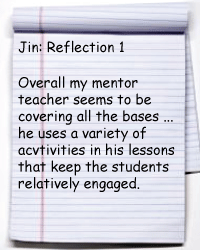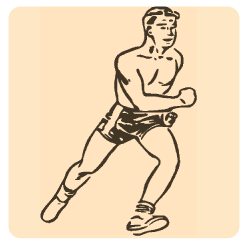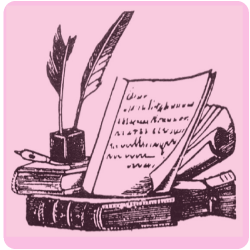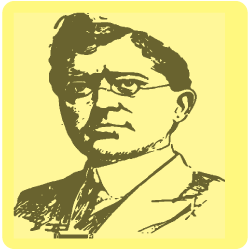
 Gardner's Multiple Intelligences and Second Language Teaching
Gardner's Multiple Intelligences and Second Language Teaching
 In their reflections, our teacher friends have noticed and expressed the importance of incorporating a variety of acitviites in lessons in order to engage students. Why is variety so important? According to researchers such as Gardner, this variety is important because it helps to appeal to the Multiple Intelligences. Knowing how to target the various interests and learning styles of students can help teachers to plan engaging and effective lessons. In this section we will look at the Multiple Intelligences and how they can be applied in the SL and FL classroom. In their reflections, our teacher friends have noticed and expressed the importance of incorporating a variety of acitviites in lessons in order to engage students. Why is variety so important? According to researchers such as Gardner, this variety is important because it helps to appeal to the Multiple Intelligences. Knowing how to target the various interests and learning styles of students can help teachers to plan engaging and effective lessons. In this section we will look at the Multiple Intelligences and how they can be applied in the SL and FL classroom. |
|
What are Gardner's Multiple Intelligences (MI)?
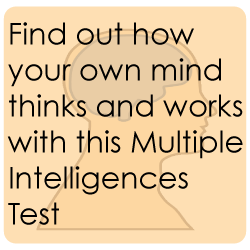 In 1983, Dr. Howard Gardner proposed that traditional intelligence as measured by IQ tests was not broad enough to account for different kinds of learning. Building on this hypothesis Gardner introduced his theory of Multiple Intelligences that outlined a range of abilities based on different types of intelligence. Gardner emphasized that people possess a mix of the Intelligences and are not ruled by only one type of intelligence. The Intelligences are:
In 1983, Dr. Howard Gardner proposed that traditional intelligence as measured by IQ tests was not broad enough to account for different kinds of learning. Building on this hypothesis Gardner introduced his theory of Multiple Intelligences that outlined a range of abilities based on different types of intelligence. Gardner emphasized that people possess a mix of the Intelligences and are not ruled by only one type of intelligence. The Intelligences are:
Linguistic: learning by using language
Logical-Mathematical: learning by using logic, rational thinking
Spatial-Visual: learning through seeing and imagining
Bodily-Kinesthetic: learning through movement and touch
Musical: learning through rhythm and music
Interpersonal: learning through social contact
Intrapersonal: learning through reflection, on one’s own
back to top
How do the MI apply to planning and classroom activities?
Understanding that people learn through a variety of methods means that teachers should plan to teach the same concepts through multiple methods and activities.
Let's look at an example scenario:
| Student A has a high Bodily-Kinesthetic intelligence. | Student B has a high Logical-Mathematical intelligence. | Student C has a high Musical intelligence. |
|
|
|
All three students are enrolled in their first year of a second language class in school. The new unit covers the vocabulary for body parts. The teacher typically uses a matching activity worksheet and vocabulary list to teach the students the new words. In this situation Student B is very successful but Students A and C are not.
 |
Considering Gardner's MI, explain why this might be the case? What could the teacher do to appeal to more of the MI? Where do the MI fit into the TREE and B-SLIM? |
 |
Considering the students above, plan 3 more activities or exercises that will appeal to several Multiple Intelligences. |
back to top
What are some application ideas for using the MI in my classroom?
Intelligence |
Examples of Teaching Activities |
Examples of Teaching Materials |
Instructional Strategies |
Linguistic
|
Lectures, discussions, word games,storytelling, choral reading, journal writing etc. |
Books, tape recorders, typewriters, stamp sets, books on tape etc. |
Read about it, write about it, talk about it, listen to it |
Logical-Mathematical
|
Brain teasers, problem solving, science experiments, mental calculation, number games, critical thinking, etc |
Calculators, math manipulatives, science equipment, math games etc. |
Quantify it, think critically about it, conceptualize it |
Spatial-Visual
|
Visual presentation, art activities, imagination games, mind-mapping, metaphor, visualization |
Graphs, maps, video, art materials, optical illusions, cameras, picture library etc. |
See it, draw it, visualize it, colour it, mind-map it |
Bodily-Kinesthetic
|
Hands-on learning, drama, dance, sports that teach, tactile activities, relaxation exercises, etc. |
Building tools, clay, sports equipment, manipulatives, tactile learning resources, etc. |
Build it, act it out, touch it, get a “gut feeling” of it, dance it |
Musical
|
Rapping, songs that teach |
Tape recorder, tape collection, musical instruments |
Sing it, rap it, listen to it |
Interpersonal
|
Cooperative learning, peer tutoring, community involvement, social gatherings, simulations, etc. |
Board games, party supplies, props for role-plays, etc. |
Teach it, collaborate on it, interact with respect to it |
Intrapersonal
|
Individualized instruction, independent study, options in course of study, self-esteem building, etc. |
Self-checking materials, journals, materials for projects etc. |
Connect it to your personal life, make choices with regard to it |
 |
Complete the Multiple Intelligences Crossword to test your knowledge. |
back to top

Howard Gardner, Multiple Intelligences and Education
http://www.infed.org/thinkers/gardner.htm
Multiple Intelligences Overview
http://www.thomasarmstrong.com/multiple_intelligences.htm









